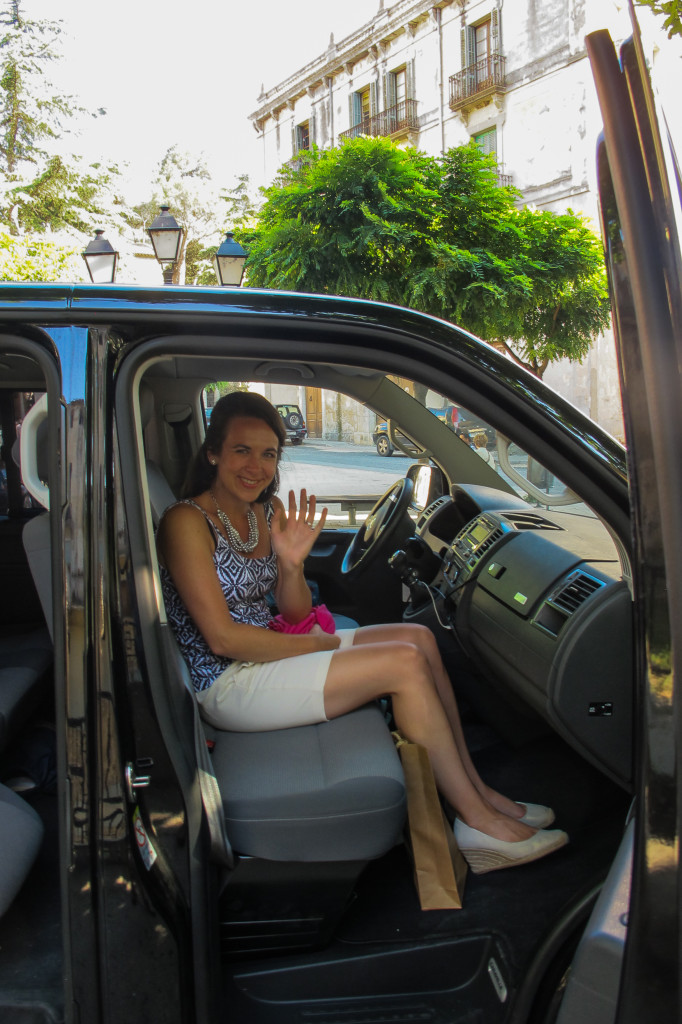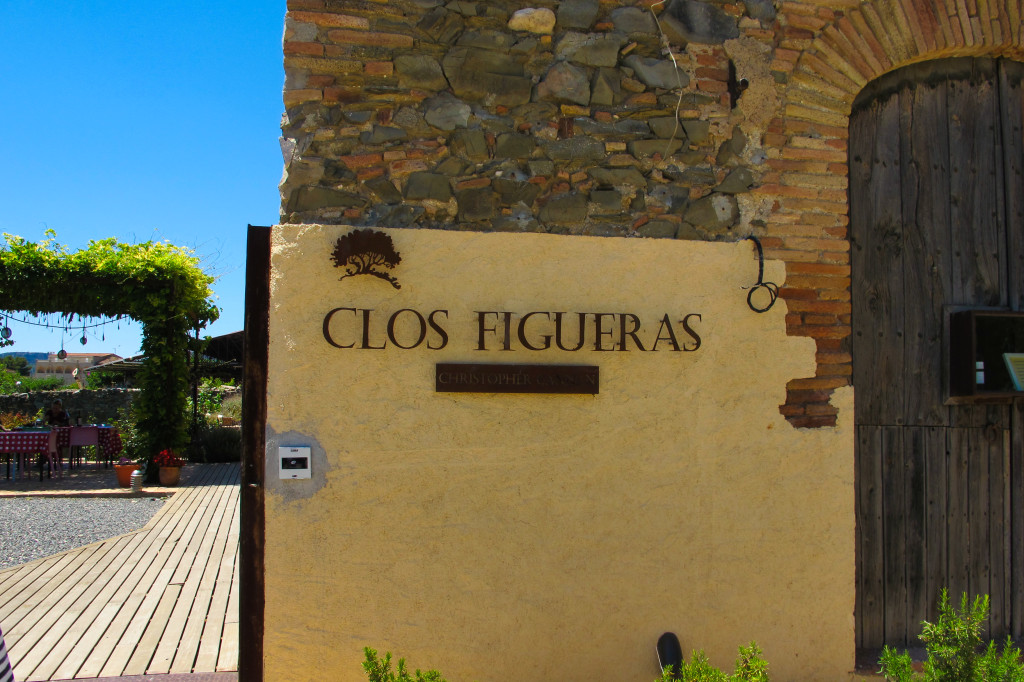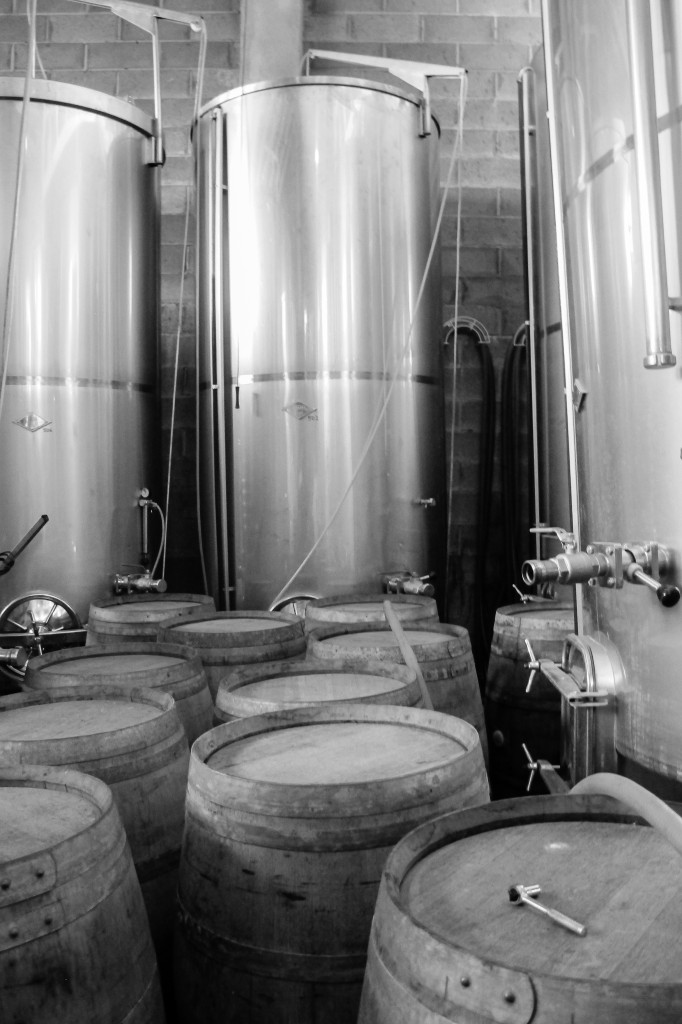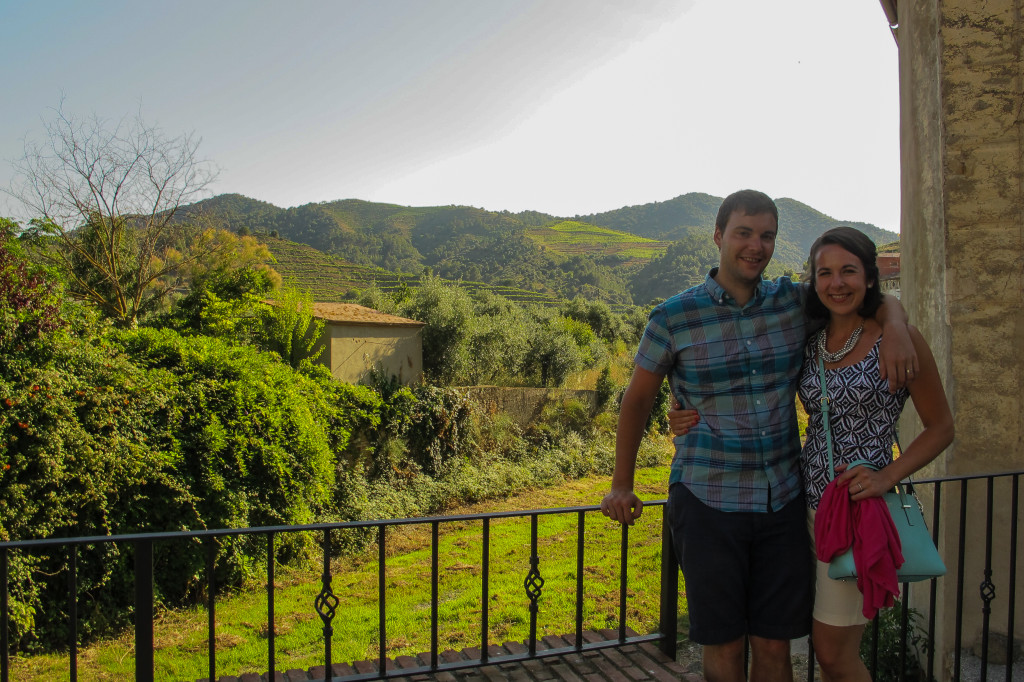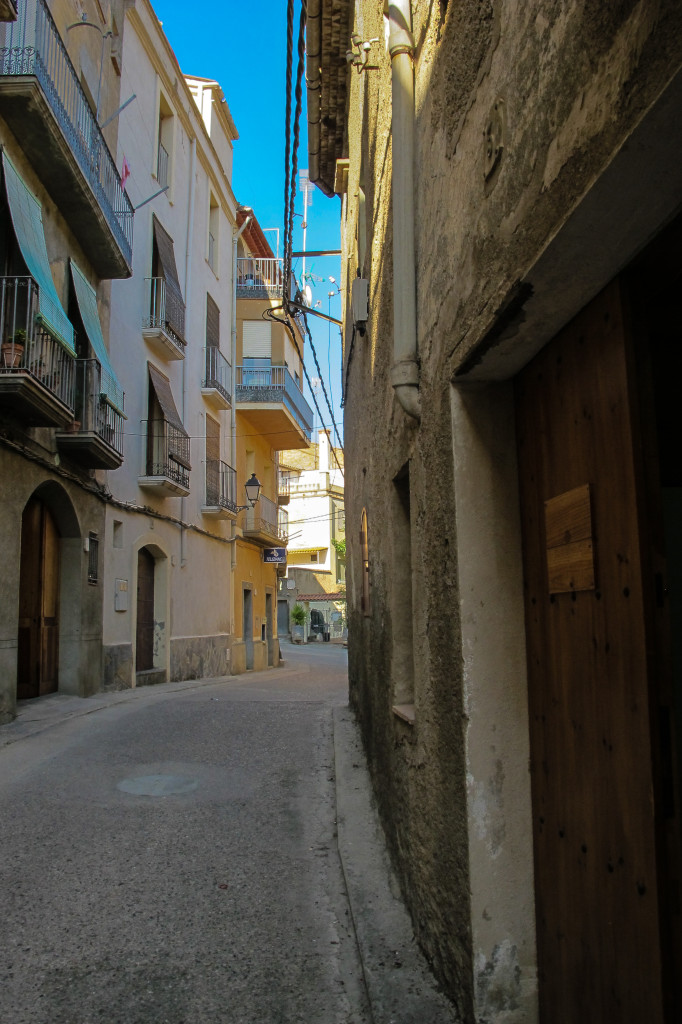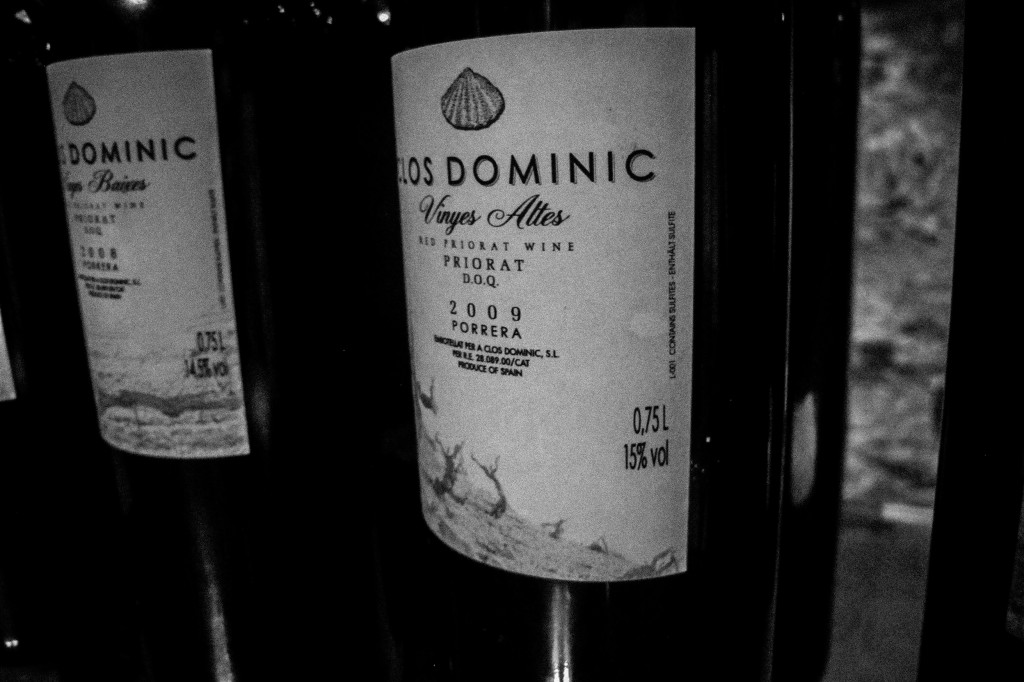Some time ago Alex and I fell in love with Spanish wines, and in particular, those that reign from the Priorat Region. This region is known for its difficult growing conditions, as it is at a higher than usual altitude (over 2,000 feet) and the terrain is basically slate – the lower elevations are black slate, then red slate and the highest elevation is clay. Can you imagine growing anything on a slate mountainside??
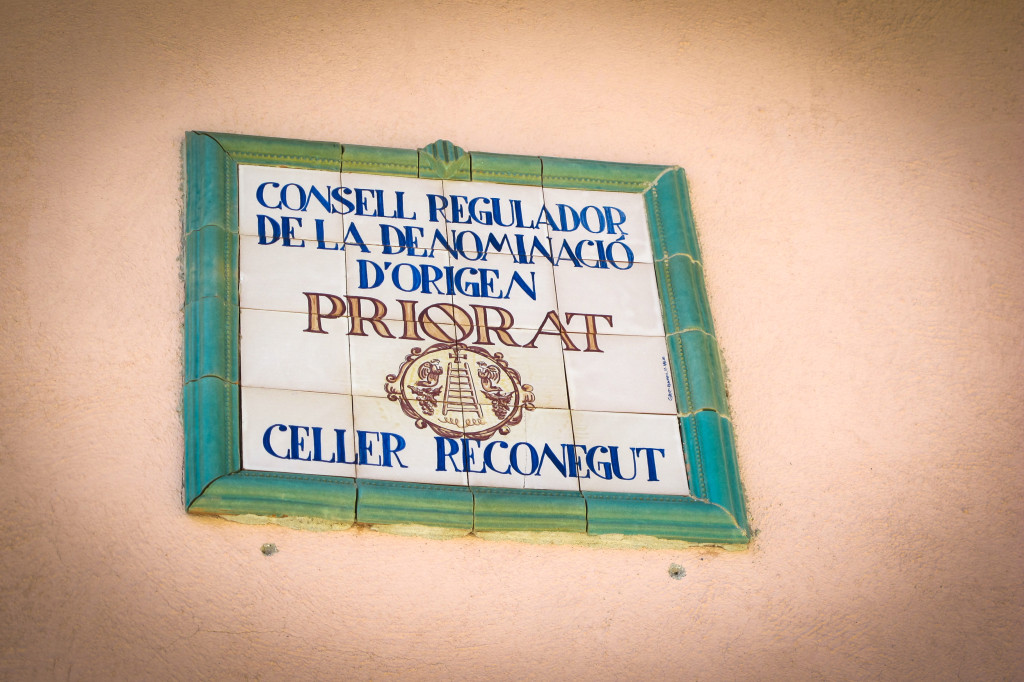
Basically no one thought you could grow grapes here, but thankfully way back in the 1100s the Spanish monks mastered the practice until the region was basically destroyed by phyllaxora {a nasty underground bug that ate away at the roots of the grapevines}. Some resilient wine makers stayed put and then in the 1980s some wine lovers decided to give it a go and came to the Priorat to try their hand at the region and the rest is history.
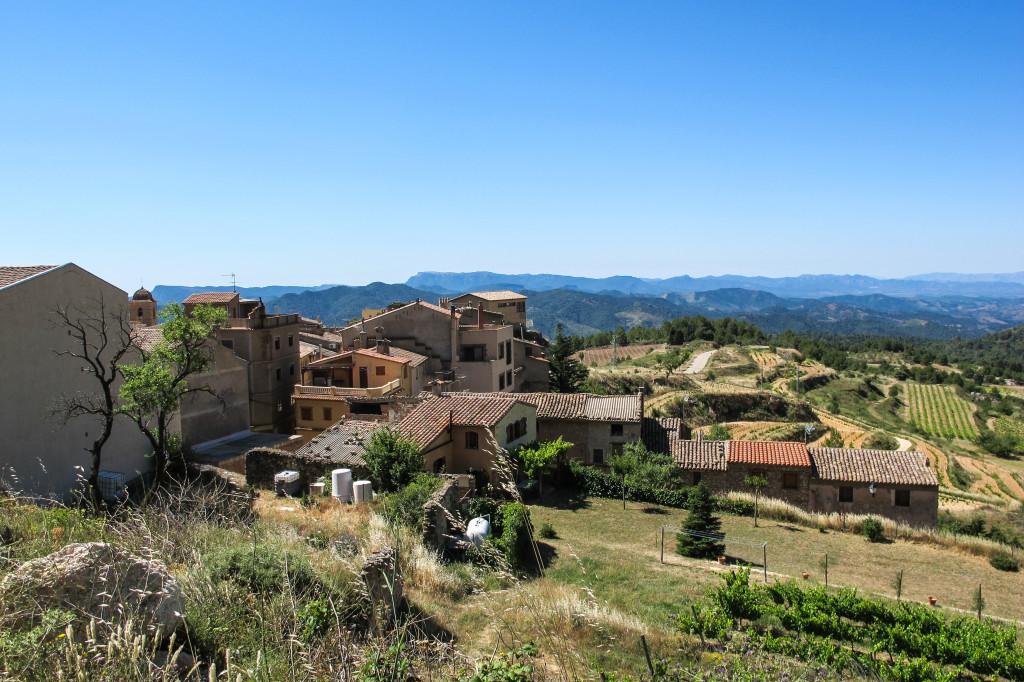
Mid-way through our Europe trip we had scheduled a tour of the Priorat wine region through Spanish Trails {a tour company}. This was one of the few pre-planned activities we had put together, but one that we were most looking forward to.
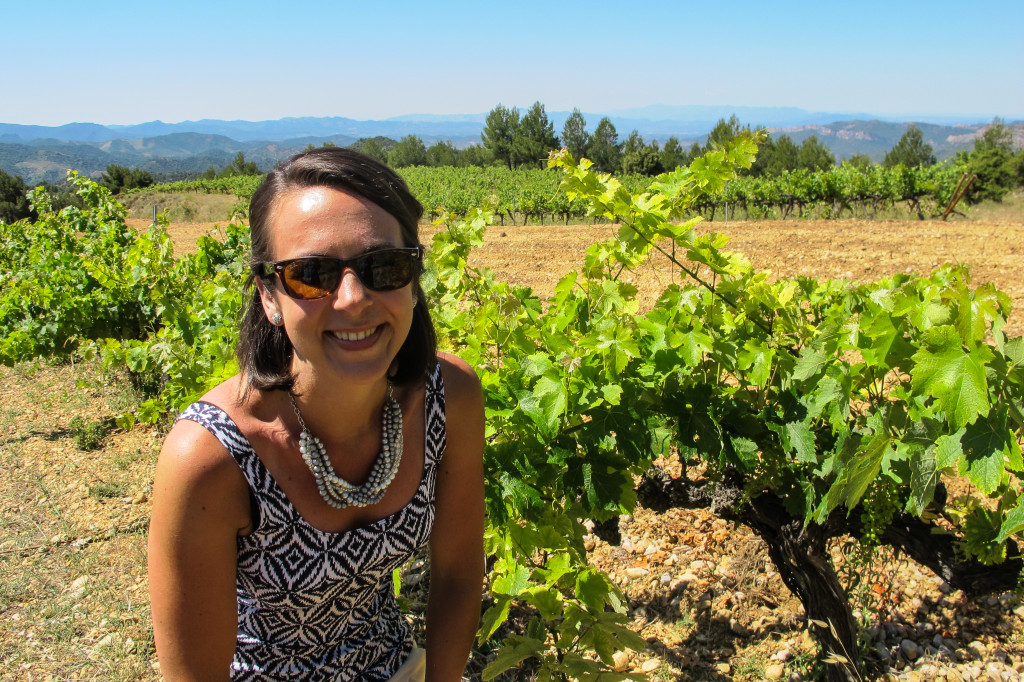
Our wine guide, Andrew, was extremely knowledgeable on the region, the wineries and on wine in general. He also had a good sense of humor. He began the day by telling everyone I was pregnant so I had to sit up front. Unfortunately {for me} no one heard me follow up and say “I’m not really pregnant!” so that made for a few interesting looks once I started drinking wine…
We started our day at Cellar Passanau, named for the Passanau family, where we took a stroll out to the fields. Mind you I was not dressed for a “stroll” across the slate mountainside… It was very worthwhile, though. We got to see how the 100 year old vines grew compared to the newer 20 year old vines, and we got to really look at the “soil” {aka slate} of the region. It was really fascinating.
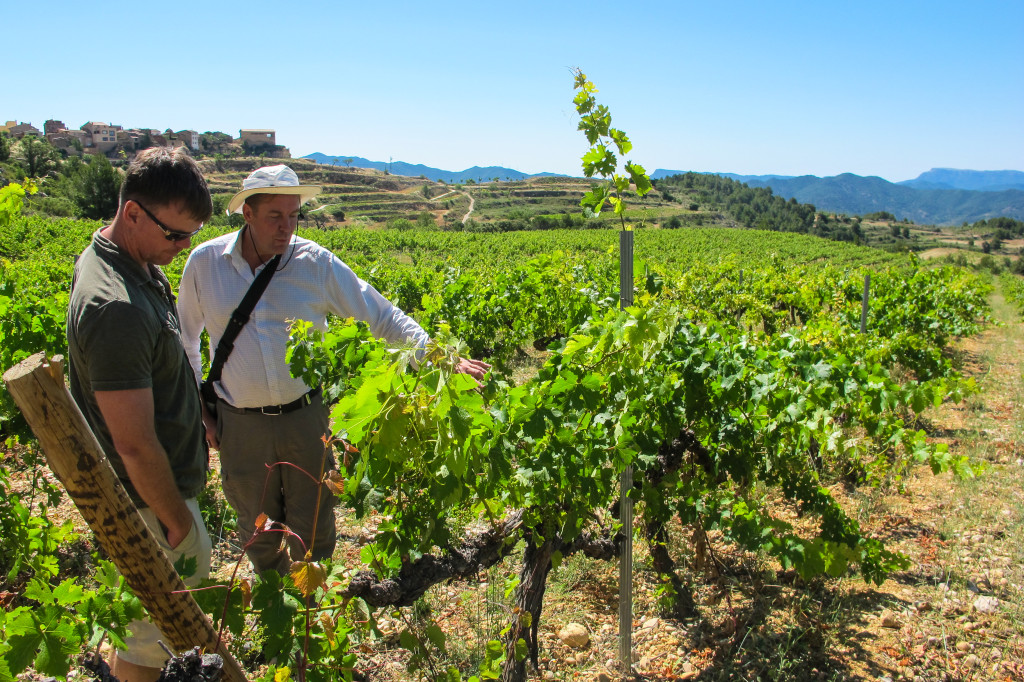
Lucky for us, we got stuck at the first winery. Literally. The streets in the Priorat are hardly wide enough for a Smart Car to pass through, but a big semi-truck was making its rounds through town and the driver locked his keys in his car, so we were stuck tasting wine after wine after wine at the first winery until the driver was able to get into his truck. I think we tried seven wines. And when I say we “tried seven wines” I mean we drank seven bottles of wine between the eight of us.
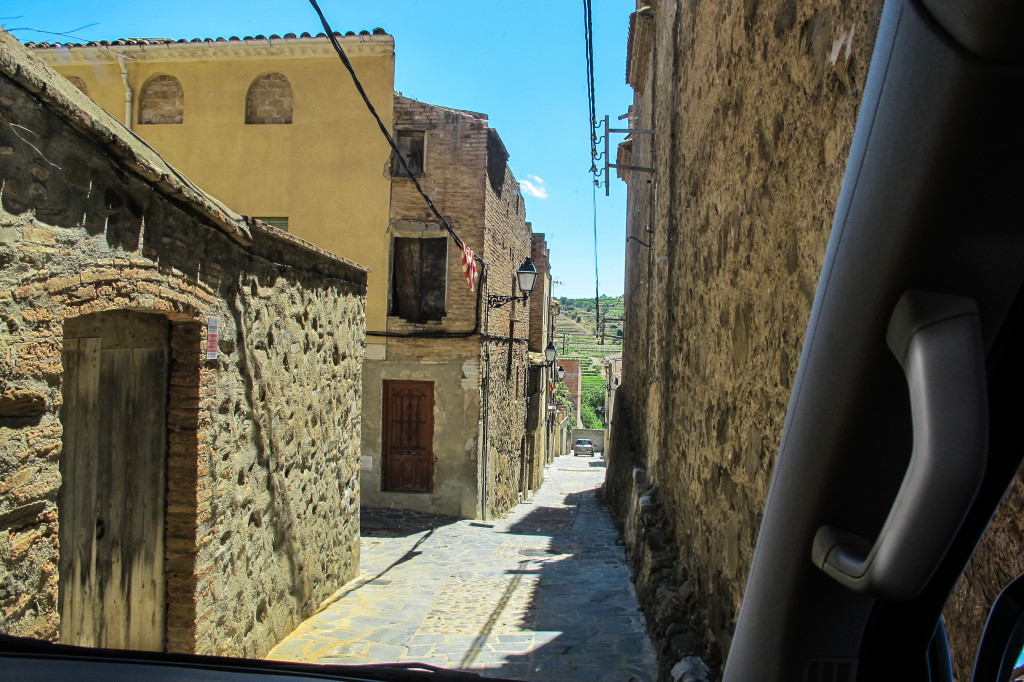
Alex ended up buying a 2002 wine that we had tried. It was out of this world. And it cost 10 Euros. We were blown away by the low cost of buying wines at the wineries here. It is so different from buying wines directly at the wineries in Washington. The distribution has made it so that it is cheaper, often, to buy a wine at the grocery store than it is at the winery. This is not the case in Spain, anyway.
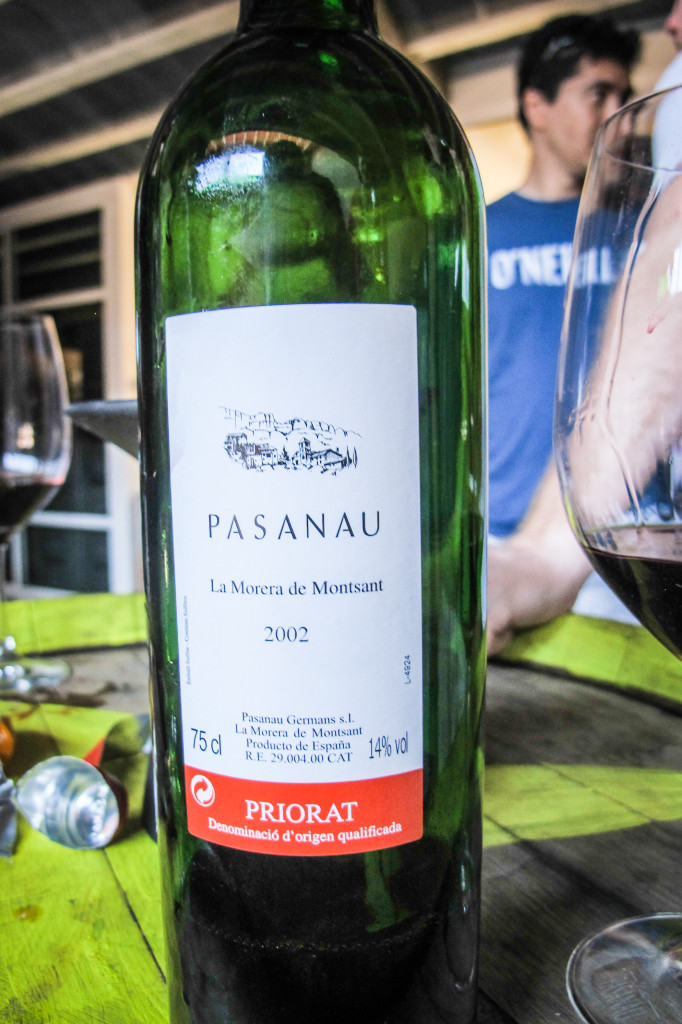
From here we drove about 15 minutes to the Clos Figueres winery. Alex and I had been fortunate enough to try a wine from this wine maker back in Seattle before we left. Henri at our favorite spot, Bottlehouse, knew we were going to this winery and he was able to get a bottle of their wine from his distributor and allowed us to try it. Needless to say, after we tried this wine we were even more excited to take the trip!
Our experience at Clos Figueres was our favorite of the day. They prepared a fabulous lunch for us that they paired with their own wines. We tried four wines here, a white and three reds, one red was from grapes from new vines, and the other two were from old vines {vines that are older than 70 years}. It is hard to pick a favorite, but really I think my favorite was wine we had already tried. We began our meal with the white wine, which was paired with some cheese, bread, their own olive oil, slices of salami and sausage, and some liver pate.
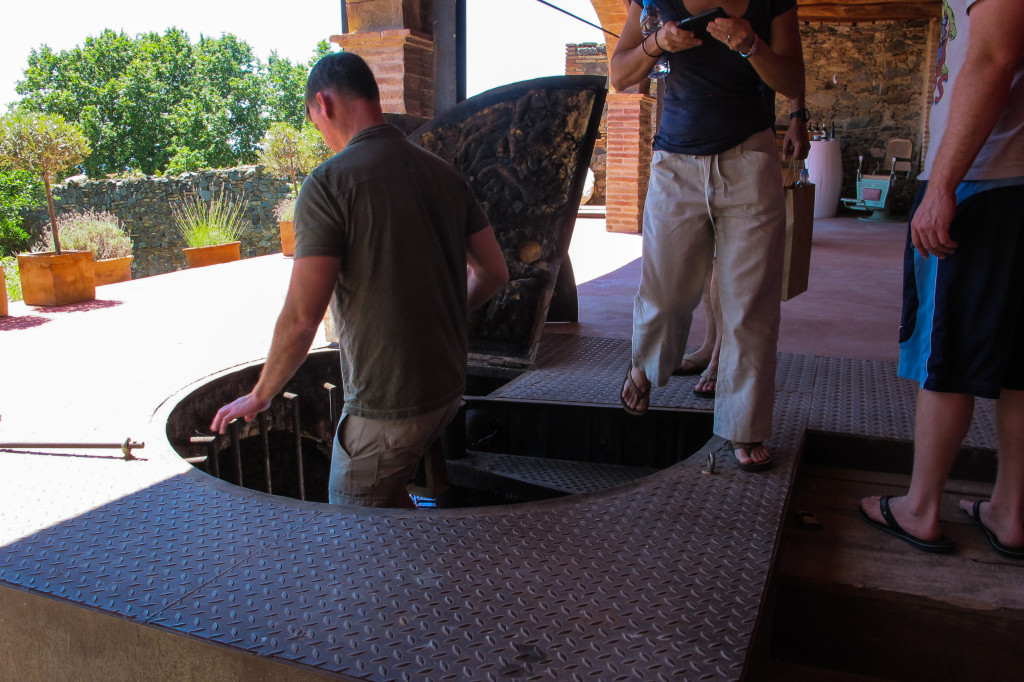
Next came the wine from new vines and my favorite part of the meal – the tomato bread. In Spain they love to smear tomato guts all over crusty bread. It tastes great, but here they let us do the smearing of the tomatoes. They gave us each our own little station with a slice of crusty bread, a clove of garlic, homemade olive oil and then a whole tomato. We rubbed the bread with a little garlic, drizzled on some olive oil and then sliced our tomato in half and smeared the cut side of the tomato all over the garlicy bread. Mmmm.
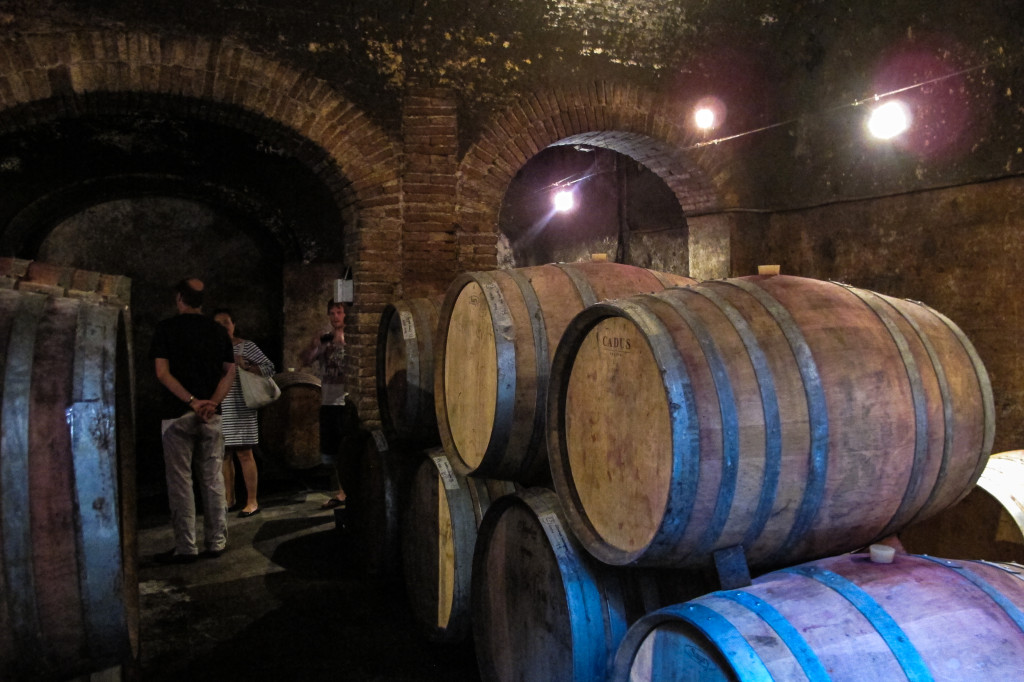
The third wine was our favorite. It was paired with a simple but divine salad. The salad was mixed greens with enormous chunks of heirloom and cherry tomatoes. Did you know that Spain has unbelievable tomatoes?
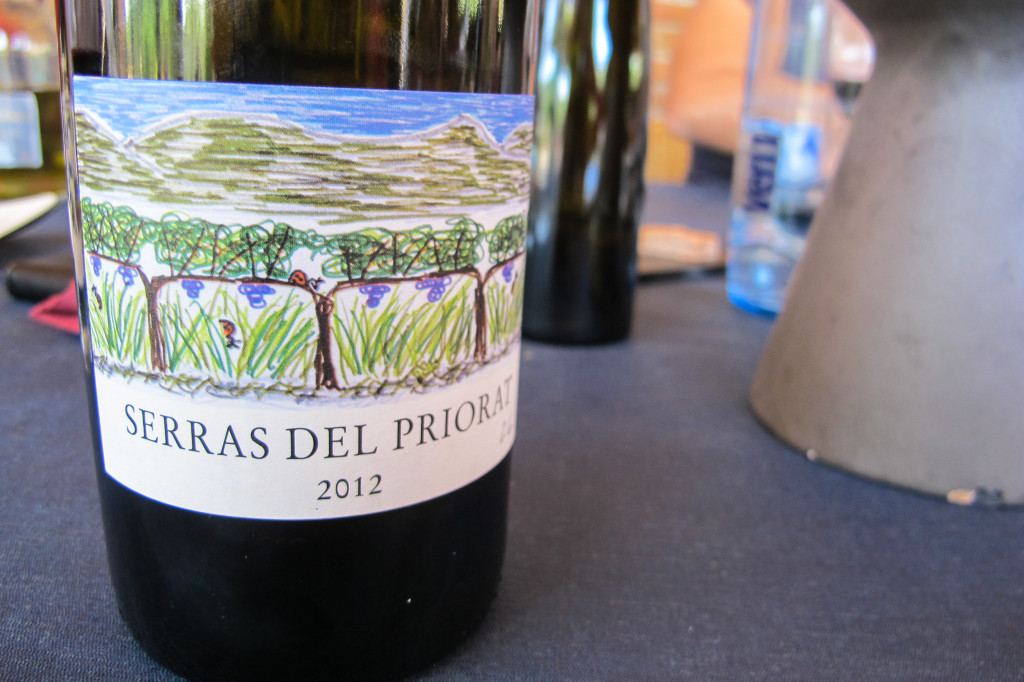
Finally, the main course was served. We were given the choice of lamb or sausage. Both Alex and I selected the sausage. It was lovely. So was the wine. It was paired with Clos Figueres’ top wine.
To finish off the meal we were given two platters with an assortment of desserts. As if we needed more food. It was an exceptional meal and experience.
On to Clos Dominic! We made our way through a teeny tiny town and met up with the wine maker, whose wife, Dominic, is the namesake of the winery. This wine maker is the heart and soul of the operation. He does it all. His production is quite small – only about 13,000 bottles of wine each year, but truly, I cannot believe how much he does.
We started our visit by taking a trip out to the field. Again, I was not dressed properly for what we came across. This field was a very steep, sandy and rocky plot of land and it was hot. That is putting it mildly. The wine maker does everything from planting the vines to weeding, harvesting the grapes and then completing the process of making and bottling the wine, giving wine tours and tastings and selling the wines. I was tired just thinking about all he does.
After our trip into the fields we went back to the cellar. Truly a cellar – we entered at ground level which was very basement-like. This is where he does a lot of the fermentation in the steel tanks, as well as the bottling process. Then we went down to the real cellar. We learned that this was over 600 years old! I cannot even comprehend. The cellar was quite musty and cobweb laden but our host had set up a lovely glass table for us to drink around. He prepared some bread and olive oil {likely some that he made himself}, a glass for each taster and had lined up a row of all of the wines we were about to try.
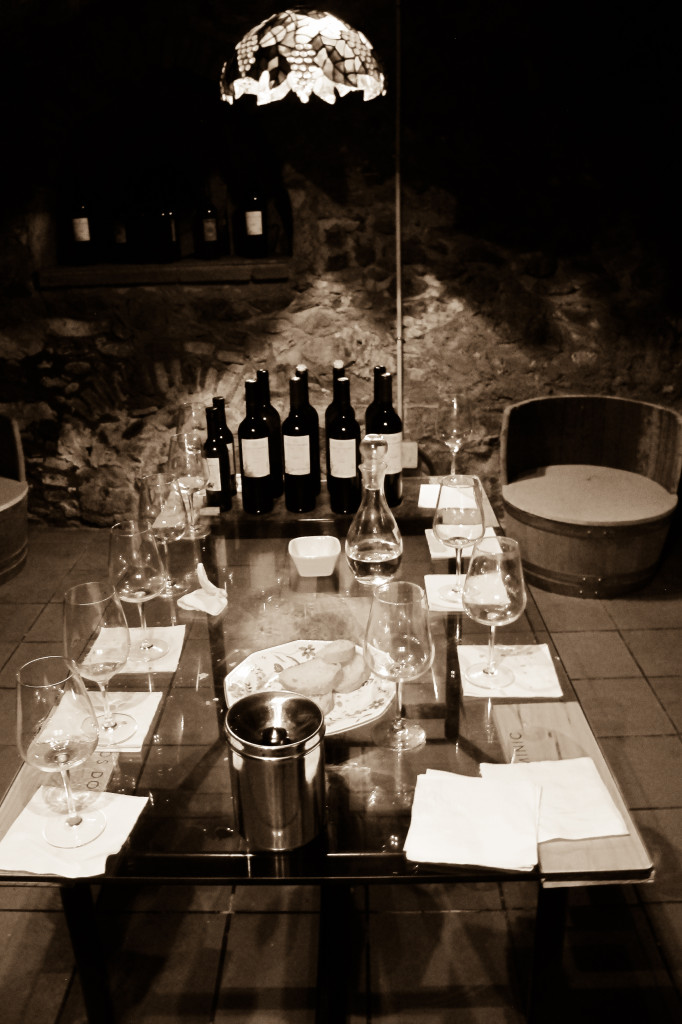
These wines were some of the biggest, boldest red wines I have ever tasted. No whites for this guy. He is strictly a red man. His “entry level” wine is served in the restaurant that is named the best in the world, then another one of his wines is the wine of choice for the Swiss government. There was some stat for each wine, but please remember I had been drinking for nearly 12 hours at this point so my memory from here out was a bit foggy.
We would have been happy to just go to one or two of these wineries, but to go to all three and get the chance to drive through the region and see the vines was such an honor and a treat. Our appreciation for wine and what it takes to be a small production winery grew exponentially as a result of this experience. We have already started looking at wine {and its cost} in a new light. We only wish we would have been able to buy more wines from these guys while on our tour, but we didn’t really have anywhere to keep it. We’re crossing our fingers we can find it in the states!
